
Categories
- TRANSMISSION-LINE
- Transmission-Line Fittings
- String Hardware
- Tower Attachment
- Parallel Groove Clamp
- Suspension Clamps
- Tension Clamps
- Compression Joint
- Repair Sleeve
- Preformed Armour Rod
- Stockbridge Damper
- Spacer & Spacer Damper
- Arcing Devices
- Counterweight & Jumper weight
- Danger plate & Number plate
- Corona & Grading Rings
- Transmission Conductor
- All aluminium stranded conductors(AAC)
- Aluminium conductors steel reinforced(ACSR)
- All aluminium alloy conductors(AAAC)
- Aluminium alloy conductors steel reinforced(AACSR)
- Arial Earth Wire & Shield Wire & Galvanized Steel Wire
- Porcelain Disc Suspension Insulators
- Composite Long Rod Insulators
- Toughened Glass Disc Insulator
- Tower of Transmission-Line
- SUBSTATION
- Connector and Fittings for Tubular Busbar
- Tubular Busbar Palm(Welding)
- Busbar A-Frame
- Connector for Tubular Busbar
- Tubular Busbar Support
- Tubular Busbar Earthing
- Tubular Busbar End Caps & Balls
- Substation Insulators
- Solid Porcelain Post Insulators(66kV -500kV)
- Solid Polymer Post Insulators(66kV-500kV)
- Hollow Core Insulators for Voltage Transformer
- Hollow Core Insulators for Capacitor
- Porcelain Disc Insualtors
- Polymer Long Rod Insulators
- Glass Disc Insulators
- Busbar
- Tubular Copper Busbar
- Rectangular Aluminum Busbar
- Rectangular Copper Busbar
- Tubular Aluminum Busbar
- Terminations & Connections for Conductor
- Aluminium Flexible Connector
- Copper Flexible Connector(Flat Braid)
- Compression Run Compression T Clamp(Closed)
- Compression Run Compression T Clamp(Open)
- Compression Run Palm Tap(Closed)
- Compression Run Palm Tap(Open)
- Compression Terminal Clamp
- Twin Conductor Compression Terminal Clamp
- Straight Bolted Type Terminal Clamp
- 90° Bolted Type Terminal Clamp
- Straight Twin Conductor Bolted Type Terminal Clamp
- 90° Twin Conductor Bolted Type Terminal Clamp
- Twin Conductor Bolted Type Tee Clamp
- Twin Conductor Run Palm Tap Lengthways Terminal Clamp
- Twin Conductor Run Palm Tap Transverse Terminal Clamp
- Parallel Groove Clamp
- Straight Connector Conductor to Conductor
- Tee Connector Conductor to Conductor
- Adaptor Plates
- Straight Type
- Right Angle Horizontal Type
- Right Angle Vertical Type
- Bi-Metallic Transition Plate
- Spacers
- Galvanized & Stainless Steel Bolts Assemblies
- Strings Fittings
- Connections for Flat Busbar
- Gantries & Structure
- Distribution Conductor
- All Aluminium Stranded Conductors(AAC)
- All Aluminium Alloy Conductors(AAAC)
- Substation Parallel Spacer Triple
- DISTRIBUTION
- Preformed Fittings
- Armor-Grip Suspension Clamp
- Trunnion Armor-Grip Clamp
- Aluminum Alloy Dead-Ends
- Copper Alloy Dead-End
- Thimbles
- Top Ties
- Armored Rod Twin Ties
- Side & Spool Ties
- Parrot Bill End Aluminum Alloy Armor Rods
- Copper Alloy Armor Rods
- Galvanized Steel Armor Rods
- Aluminium Alloy Line Splice
- Copper Alloy Line Splices
- Galvanized Steel Line Splices
- Aluminium Alloy Full Tension Line Splice
- T-Connector
- Helical Arcing Horn
- Galvanized Steel Guy-Grip
- Pole Top Make Off
- Insulated Stay
- Double-Wrap Guy-Grip
- Spiral Vibration Damper High Impact PVC
- Lashing Rods
- PVC Spacer
- The Pole Line Hardware
- Cross Arms
- Fastenes Bolts & Nuts
- Thimble Bolt Rod & Eye Bolt
- Eye Nuts
- Clevis
- Insulation Pin & Studs & Spindles
- Pole Hoop
- Cable & Conductor
- ACSR
- AAC
- ABC Cable
- SAC Cable
- Distribution Insulators
- Porcelain Disc Insualtors
- Polymer Long Rod Insulators
- Glass Disc Insulators
- Porcelain Line Post Insulators(Vertical)
- Porcelain Line Post Insulators(Horizontal)
- Polymer Line Post Insulators(Vertical)
- Polymer Line Post Insulators(Horizontal)
- Porcelain Pin Insulator(BS standard)
- Porcelain Pin Insulator(ANSI standard)
- Polymer Pin Insulators
- Shackle Insulators
- Spool Insulators
- Stay Insulators
- Wiring Insulators
- Telephone Lines Insulators
- Guy Strain Insulators
- Spindle for insulators
- BS Spindle for Pin Insulators
- ANSI Spindle for Pin Insulators
- Normal Short Spindle for Line Post Insulators
- Rachet short spindle for line post insulators
- Rachet long spindle for line post insulators
- Fuse/fuse cutout
- Porcelain Fuse Cutout
- Composite Fuse Cutout
- K Type Fuse Link
- HRC Fuse
- J Type Fuse
- Disconnect Switch
- Surge Arrestor 11-36kV(5kA-10kA)
- Over head Line fittings
- Suspension Clamp
- Bolt Type Tensioning Clamp
- U-Bolts
- Shackle
- Ball Eye
- Socket Tongue
- Arcing Horn
- UT Connectors
- ABC fittings
- Copper Strand Wire and Braid Connector
- Insulation Piercing Connector(IPC)
- Fire-Retardant IPC
- T connecting Terminal
- Insulation Piercing Grounding Connectors
- Fuse Bace
- Wedged Insulation Strain Clamp
- Suspension Clamp for ABC cable
- Suspension Clamp with Aluminum Bracket
- Anchoring Clamp
- Metal Anchor Clamp
- Four-Core Tension Clamp
- Pre-Insulated Sleeve
- Pre-Insulated Bimetal Sleave
- Expansion Screws
- JXL Series Clamp(Wedge Type)
- Parallel Groove Clamp with Insulator Cover
- SAC fittings
- Anti Sway Bracket for HDPE Spacer
- Tangent Support Bracket
- HT Tape for SAC Cable
- Cable lug
- Copper Cable Lugs-DT
- Double Holes Copper Cable lugs-DT2
- Aluminum Cable Lugs-DL
- Double holes Aluminum Cable lugs-DL2
- Bi-Metal Cable Lugs-DTL
- Copper Aluminum Cable lugs-CAL-A
- Copper Aluminum Cable lugs-CAL-B
- Copper Aluminum Cable lugs-European style
- Copper Aluminum Cable lugs-For cable tap box
- Copper Cable Lugs-OT
- P.G. Clamp & Connector
- Copper Parallel Groove Clamp-CAPG
- Aluminum Parallel Groove Clamp-CAPG
- Copper Parallel Groove Clamp
- Aluminum Parallel Groove Clamp-JB
- Copper-Aluminum Parallel Groove Clamp-CAPG(Hard-Solder)
- Copper-Aluminum Parallel Groove Clamp-CAPG( Friction Welding)
- C Clamp-Copper
- C Clamp-Aluminum
- Connecting Clamp-Aluminum
- Connecting Clamp-Copper
- Connecting Clamp (Hard-Solder)
- Connecting Clamp (Friction Welding)
- Connecting Tube-Aluminum
- Connecting Tube-Copper
- Connecting Tube-Bimetal
- Copper Plate
- Aluminum Plate
- Bimetal Plate
- Copper-Aluminum Parallel Groove Clamp( Friction Welding)
- Stay complete set
- Eye Bolts
- Turn Buckle
- Thimble
- Stay Grip
- Stay Wire
- Adjustable Stay Rod
- Non Adjustable Stay Rod
- Stay Anchor Plate/Earth Plate
- Other accessory
- Stainless Steel with Retaining Buckle
- Cable Nail
- Insulation Tape
- Stainless Steel Strip
- Aluminium Insulated Tie Wire
- COMMUNICATION
- Dead-End for OPGW
- Single Suspension Set
- Double Suspension Set
- Vibration Damper
- Armour Rods for Vibration Damper
- Ground Wire Set
- Joint Box
- Cable Tray
- Spiral Vibration Damper
- Corona Coil
- Downlead
- Downlead
- Fastened Fittings for Pole
- Fastened Fittings for Pole
- Fastened Fittings for Twoer
- Fastened Fittings for Twoer
- Fastened Fittings for Twoer
- GROUNDING SYSTEM
- Earth Rod
- Solid Stainless Steel Earth Rods
- Solid Copper Earth Rods
- Copper Clad Steel Earth Rods
- H.D.G Steel Earth Rods
- Earthing Wire
- Copper Wire
- PVC Covered Copper Wire
- Flexible Copper Braid
- Copper Clad Steel Wire
- Fittings for Earth Rod
- Fittings for Threaded Earth Rod
- Fittings for Unthreaded Earth Rods
- Earth Tube
- Conductor Tape
- Copper Tape
- Tinned Copper Tape
- PVC Insulated Copper Tape
- Stainless Steel Tape
- Aluminum Tape
- Bentonite
- Concrete Earth Pits
- Connectors
- C connectors
- Tinned Copper Flexible Connector
- Tape Clip
- Tape Clamp
- Rod to Tape Clamp
- Rod to Cable Clamp
- U-Bolt Rod Clamp
- Earth Points
- Earth Plates
- Solid Copper Earth Plates
- Lattice Copper Earth Plates
- Earth Bars & Disconnector Links
- Exothermic Welding
- Exothermic Powder
- Tooling Box
- Exothermic Welding Mould
- Marconite
- INSULATOR FITTINGS
- Clevis Fittings
- Y-Clevis Fittings
- Tongue Fittings
- Socket Fittings
- Ball Fittings
- Eye Fittings
- For Line Post Insulator
- For Cross-Arm Composite Insulator
- For Pin Insulator
- For Railway Insulator
- For Clamp (Vertical)
- For Clamp (Horizontal)
- Ball Pin & Socket Cap
- Tongue Pin & Clevis Cap
- For Others
- Top Head Fitting for Line Post Insulator
- Top Head Fitting Clevis for Line Post Insulator
- Top Head fitting Tongue for Line Post Insulator
- POWER CONSTRUCTION TOOLS
- Galvanized Steel Antitwist Wire Rope
- Hydraulic Press
- Hand Hydraulic Crimping Tools
- Cable Cutter
- Tube Terminal Crimping Tools
- Mechanical Cable Cutter
- Wire Grip
- Hand Puller
- Snactch Block
- Stringing Block
- Cable Wellhead Pulley
- Cable Orifice Protection Pulleys
- High Voltage Operating Rod/Hot Stick
- H.V. Earthing Wire and Rod
- Security Clamp
- Wood Pole Climber
- Grounding Clamp
- Hot Line Cable Clamp
- Swivel Joints
- Elelctro Scope
- OEM/ODM
- SOLAR

Fuse/fuse cutout
Fuse/fuse cutout
-
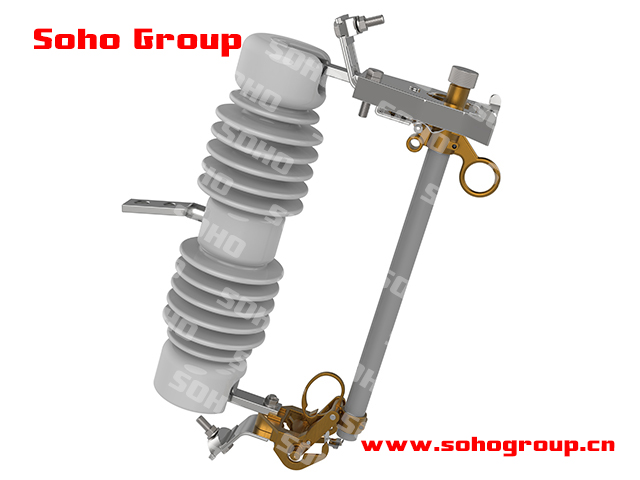 Porcelain Fuse Cutout
Porcelain Fuse Cutout● Durability: Porcelain fuse cutouts are often made from high-quality porcelain and are weather-resistant with a long service life, capable of operating in various environmental conditions.
● Automatic Reclosure: Some models of porcelain fuse cutouts have an automatic reclosure feature, meaning they automatically close after a fault is cleared to reduce downtime.
● Low Maintenance: Porcelain fuse cutouts typically require minimal maintenance, usually only necessitating the replacement of the fuse element after operation.
● Reliable Overcurrent Protection: These devices offer reliable overcurrent protection, quickly cutting off the current in case of a fault to prevent equipment damage.
● External Insulation: Porcelain fuse cutouts typically use porcelain for external insulation to ensure the device can function in adverse weather conditions.
● Various Voltage Ratings: SOHO typically offer models with a range of voltage ratings to meet the requirements of different power systems.
-
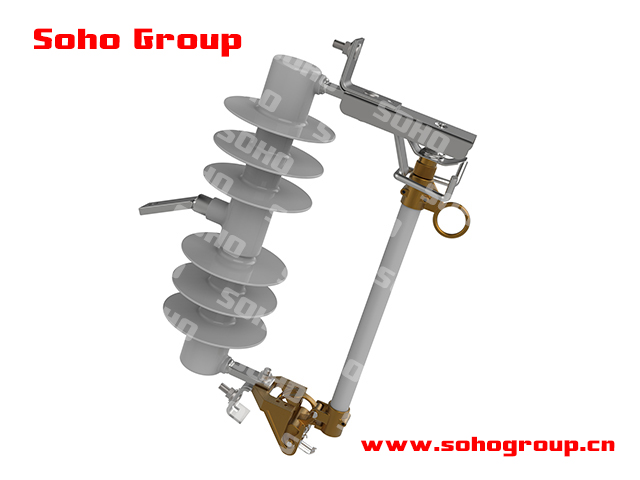 Composite Fuse Cutout
Composite Fuse Cutout● Lightweight and Durable: Polymer fuse cutouts are typically lighter than traditional porcelain fuse cutouts while being durable and capable of operating in various environmental conditions.
● Automatic Reclosure: Some models of polymer fuse cutouts have an automatic reclosure feature, which automatically closes the cutout after a fault is cleared, reducing downtime.
● Low Maintenance: Polymer fuse cutouts typically require minimal maintenance, usually only necessitating the replacement of the fuse element after operation.
● Reliable Overcurrent Protection: These devices offer reliable overcurrent protection, quickly cutting off the current in the event of a fault to prevent equipment damage.
● External Insulation: Polymer fuse cutouts typically use polymer materials for external insulation to ensure that the device can function in adverse weather conditions.
● Various Voltage Ratings: SOHO typically offer models with a range of voltage ratings to meet the requirements of different power systems.
-
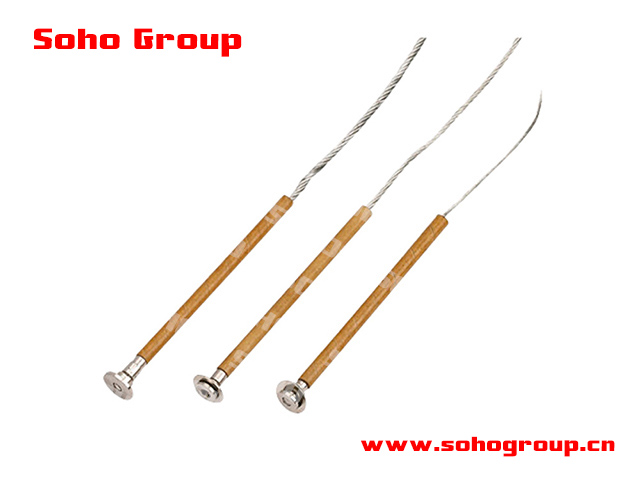 K Type Fuse Link
K Type Fuse Link● High Interrupting Capacity: K-type fuse links for fuse cutouts have a high interrupting capacity, which means they can safely interrupt high fault currents that may occur in distribution lines. This helps prevent damage to the electrical system.
● Time-Delay Characteristics: These fuse links are typically designed with time-delay characteristics. They can withstand short-duration overcurrent conditions, providing some level of time-delay protection to accommodate momentary overloads and reduce the likelihood of nuisance tripping.
● Voltage Rating: K-type fuse links for fuse cutouts have a specific voltage rating, indicating the maximum voltage they can safely interrupt without sustaining damage. This rating is typically expressed in volts (V).
● Ampere Rating (Current Rating): K-type fuse links have an ampere rating, indicating the maximum current they can handle under normal operating conditions. The rating is usually measured in amperes (A).
● Inrush Current Tolerance: K-type fuse links used in conjunction with fuse cutouts need to be capable of withstanding inrush currents, particularly when the circuit is first energized. Inrush current tolerance ensures that the fuse doesn't blow due to the transient high currents during startup.
● Applications: K-type fuse links for fuse cutouts are commonly used in overhead power distribution systems to protect distribution lines, transformers, and associated equipment from overcurrent conditions and short circuits.
● Safety: These fuse links enhance the safety of electrical distribution systems by preventing damage to equipment and infrastructure during fault conditions.
● Replacement: If a K-type fuse link for a fuse cutout operates due to a fault or overcurrent condition, it must be replaced with a fuse link of the same type, rating, and characteristics to maintain the protection of the distribution system.
-
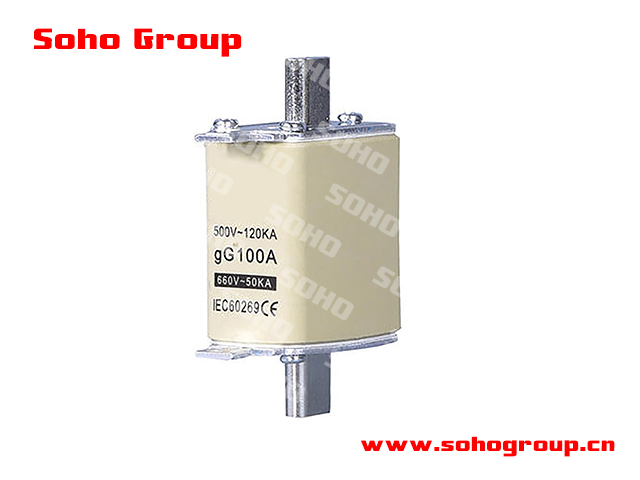 HRC Fuse
HRC Fuse● High Rupturing Capacity: HRC fuses are designed to safely interrupt high fault currents. They have a high interrupting capacity, which means they can handle and safely interrupt large fault currents without causing damage to the fuse or the electrical system.
● Voltage Rating: HRC fuses are available in various voltage ratings, and they are selected based on the voltage of the electrical system they are intended to protect. These fuses are used in medium to high-voltage applications.
● Current Rating: Each HRC fuse is assigned a specific current rating (ampere rating), which indicates the maximum current that the fuse can carry continuously without blowing. This rating is measured in amperes (A).
● Types and Classes: HRC fuses come in various types and classes, each designed for different applications and time-current characteristics. Common types include gG, gM, aM, and others, with each type providing specific protection characteristics.
● Time-Delay Characteristics: Some HRC fuses have time-delay characteristics, allowing them to withstand short-duration overcurrent conditions. This is particularly important in applications where brief overloads occur as part of normal operation.
● Construction: HRC fuses consist of a fuse element, which is typically made of a metal or alloy with a high melting point, enclosed in a ceramic or fiberglass tube. The tube provides mechanical support and electrical insulation.
● Arc-Quenching Features: HRC fuses are designed to effectively quench the electrical arc that forms when the fuse element melts during an overcurrent condition. This helps prevent the arc from causing further damage.
● Applications: HRC fuses are used in a wide range of applications, including power distribution systems, motor protection, transformer protection, and industrial equipment protection. They are especially common in medium and high-voltage systems.
● Safety: HRC fuses are a critical component for ensuring the safety and reliability of electrical systems by protecting against short circuits, overloads, and other electrical faults.
● Replacement: If an HRC fuse operates due to a fault, it must be replaced with a fuse of the same type, voltage rating, current rating, and characteristics to maintain the integrity of the electrical protection.
-
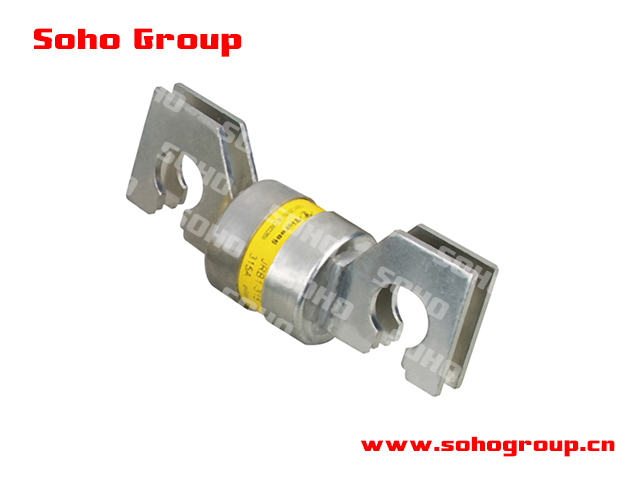 J Type Fuse
J Type Fuse● Designation: BS 88
● Physical Characteristics: The "J" fuse is a cartridge-style fuse, meaning it is enclosed in a cylindrical or tubular housing, typically made of ceramic. The dimensions and size of the fuse vary depending on the specific current rating, and they are designed to fit into a compatible fuse holder or base.
● Voltage Rating: "J" fuses come in various voltage ratings, typically ranging from 240V to 690V, depending on their intended applications.
● Current Rating: The "J" fuses are available in different current ratings to match the specific electrical load requirements. These ratings can vary from a few amperes to several hundred amperes.
● Applications: "J" fuses are commonly used in industrial and commercial applications to protect electrical circuits and equipment from overcurrent conditions. They are designed to provide circuit protection and to safely interrupt the flow of current in case of a fault.
● Characteristics: The specific characteristics of "J" fuses can vary, but they typically include features such as high breaking capacity (the ability to safely interrupt high fault currents) and time-delay characteristics (to accommodate short-duration overcurrent conditions without blowing).
Sorry, no matches were found in Products for Fuse/fuse cutout.
Want to get the matched products and detailed quotations?







 +86-25-58065309
+86-25-58065309
 www.sohogroup.cn
www.sohogroup.cn Daqiao Industry Park, Yangzhou City,
Daqiao Industry Park, Yangzhou City,